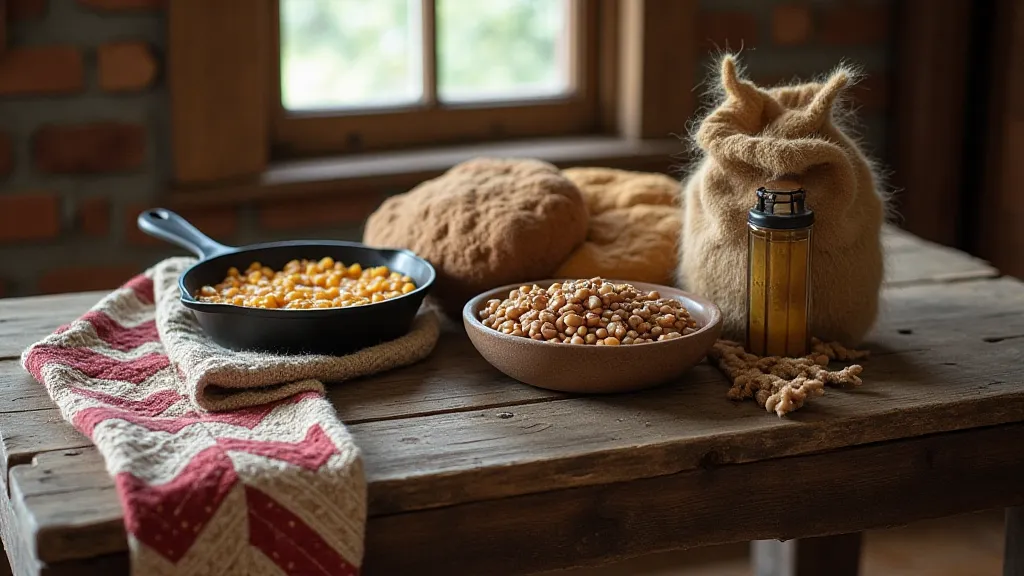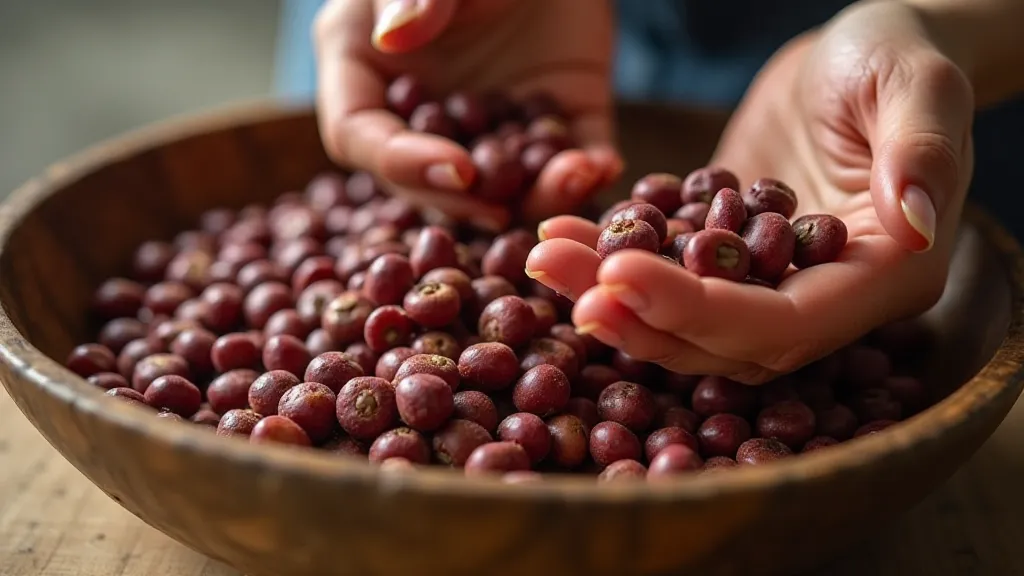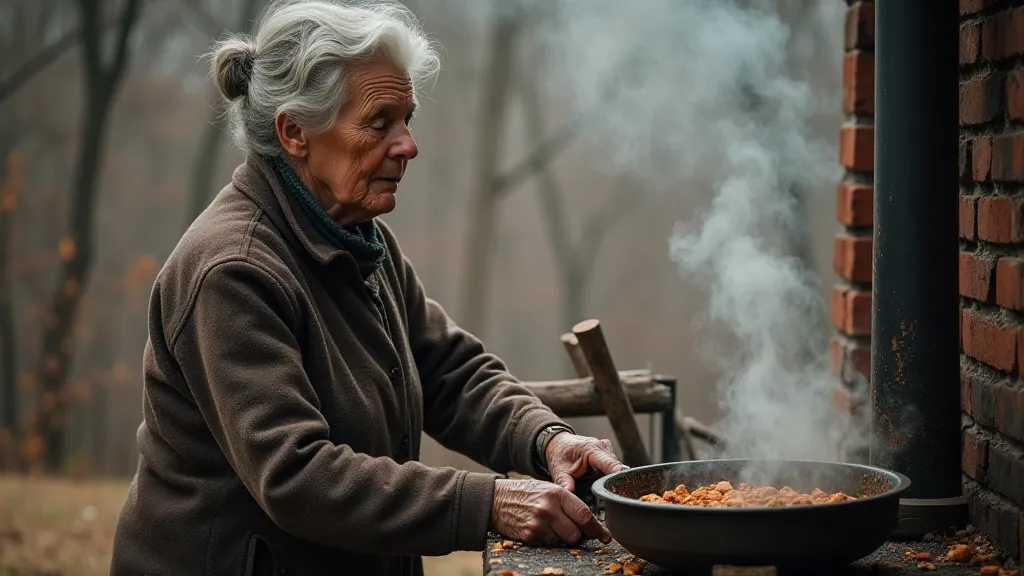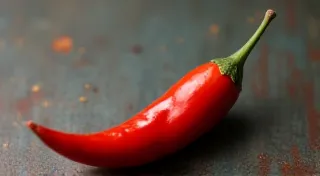The Echo of Ancestors: How Soil Shapes Taste in Appalachian Cooking
There’s a certain resonance you feel when you’d encounter an antique accordion. Not just the musical potential locked within its bellows and keys, but a feeling of connection to a time when music and sustenance were inextricably bound. Similarly, there’s a palpable feeling of history and heritage that rises from a plate of Appalachian food. It’s more than just a meal; it’s a conversation with generations, a story whispered from the soil itself. The food of Appalachia isn’t just about what's grown and prepared; it’s a direct reflection of the region’s unique terroir and the enduring spirit of the people who call it home. It’s a legacy built on resourcefulness, resilience, and a profound understanding of the land.
To truly understand Appalachian cooking is to understand the region's geography. Nestled in the heart of the Appalachian Mountains, this area encompasses a vast expanse of diverse landscapes, from the rolling hills of Kentucky to the rugged peaks of West Virginia and the lush valleys of North Carolina. These mountains, older than the Alps, have shaped not only the land but also the lives and customs of those who inhabit them. The soil, a complex mix of minerals and organic matter, is unlike anywhere else, influencing the taste and texture of everything that grows within it.

A History Rooted in Resourcefulness
For centuries, Appalachian communities were largely isolated, relying on their own ingenuity and the bounty of the land for survival. Early settlers, many of whom were Scotch-Irish and German immigrants, brought with them their own culinary traditions. But necessity dictated adaptation. The harsh realities of mountain life – long winters, limited access to markets, and unpredictable harvests – forced them to become incredibly resourceful. Little was wasted. Everything, from the nose-to-tail utilization of livestock to the preservation of fruits and vegetables through canning, pickling, and drying, became an essential skill.
Corn, in its myriad forms, became a cornerstone of the Appalachian diet. Not just the sweet corn we enjoy today, but heirloom varieties like Boone County Dent and Hickory King, perfectly suited to the mountain soil and climate. Cornmeal became the basis for cornbread, grits, and numerous other dishes. Beans, another staple, were dried and stored for winter use, providing a vital source of protein. Wild game, such as deer, squirrel, and rabbit, supplemented the diet, and foraging for wild herbs, berries, and mushrooms became a seasonal ritual.
The Art of Preservation: A Taste of Time
The preservation techniques used in Appalachian cooking aren’t simply methods of storing food; they are cultural practices that have been passed down through generations. Sorghum molasses, for example, is made from the juice of the sorghum plant and is a naturally sweet alternative to refined sugar. The process involves harvesting the stalks, extracting the juice, and then simmering it down until it thickens into a dark, rich syrup. The aroma alone evokes a sense of nostalgia and connection to the past. This deeply ingrained relationship with preservation methods, the dedication to carefully transforming raw ingredients into lasting sustenance, feels akin to the culinary narratives explored in regions like Southeast Asia, where the tamarind's tang, and other souring agents, are similarly central to creating complex and enduring flavors.
Canning, another vital skill, allowed families to preserve fruits and vegetables for long-term storage. Jams, jellies, and pickles filled pantry shelves, providing a taste of summer long into the cold winter months. The process itself required patience and precision, as improper canning could lead to spoilage and even illness. Yet, the reward – a pantry brimming with homemade delicacies – made the effort worthwhile. The taste of a jar of grandmother’s pickled beans isn’t just delicious; it’s a taste of history, a tangible link to a cherished past.
Heirloom Varieties and Forgotten Flavors
The unique terroir of Appalachia has fostered the development of distinct heirloom varieties of fruits and vegetables. These aren’t the standardized, mass-produced varieties found in supermarkets; they are cultivars that have been carefully adapted to the local environment over generations. The Pink Eye Purple Hull Pea, for example, is a native Appalachian pea with a distinctive flavor and texture. The Brandywine tomato, with its rich, almost smoky flavor, is another beloved heirloom variety. The focus on cultivating and preserving these unique strains, protecting them from the homogenizing influence of industrial agriculture, resonates with a global movement to reclaim culinary heritage and celebrate regional specificity - a sentiment deeply explored in discussions of Portuguese gastronomy, where the golden age of gastronomy reflects a careful stewardship of indigenous ingredients and traditions.
The loss of these heirloom varieties is a tragedy, as they represent a vital part of Appalachian culinary heritage. Fortunately, there is a growing movement to preserve and promote these forgotten flavors. Farmers’ markets and local food initiatives are playing a crucial role in connecting consumers with the bounty of the region and supporting the farmers who are dedicated to preserving these unique cultivars. To taste these heirlooms is to rediscover a lost connection to the land – a flavor profile shaped by centuries of careful cultivation and adaptation.

More Than Just Food: A Cultural Tapestry
Appalachian cooking is more than just a collection of recipes; it’s a reflection of the region’s culture and values. It’s about sharing a meal with family and friends, celebrating the harvest, and honoring the traditions of the past. It’s about resourcefulness, resilience, and a deep connection to the land. The communal aspects of Appalachian food culture – the potlucks, the barn raisings, the family reunions – all reinforce the importance of community and shared experience.
The craftsmanship evident in many Appalachian culinary traditions also speaks to a broader cultural value. From the hand-stitched quilts used to cover canning jars to the intricately carved wooden spoons used for stirring sorghum molasses, each item represents a dedication to quality and artistry. These aren't mass-produced items; they are unique creations imbued with the maker’s skill and care. The dedication to restoration and collecting antique tools and cookware reflects the broader desire to preserve and celebrate this heritage. This commitment to preserving the tools and techniques of the past is a sentiment not dissimilar to that found in cultures with ancient culinary traditions, where food preparation is entwined with a deep respect for history and craftsmanship - a theme evident in explorations of Roman cuisine, where the shadows of the Colosseum reveal layers of culinary history and innovation.
Rediscovering the Echo
In a world increasingly dominated by fast food and processed ingredients, Appalachian cooking offers a refreshing reminder of the simple pleasures of life. It’s a cuisine rooted in tradition, resourcefulness, and a deep respect for the land. By rediscovering the flavors and techniques of Appalachian cooking, we can reconnect with our culinary heritage and appreciate the enduring spirit of the people who have shaped this unique region. The echo of ancestors isn't just a taste; it's a feeling, a connection to the land and the generations who have worked it. It's a conversation, whispered from the soil, waiting to be heard.

The legacy extends beyond the recipes themselves, encompassing a worldview shaped by scarcity and self-sufficiency. The ability to thrive in a challenging environment fostered a deep understanding of natural cycles and a profound respect for the resources available. Just as the beneath banyan's shade traditions embody the rhythms of a coastal ecosystem, Appalachian cuisine is intrinsically linked to its mountainous terrain. The preservation of traditions often reflects the unique landscape, and the commitment to sustainability remains crucial for both cultures. The commitment to sustainability remains crucial for both cultures.
The preservation of Appalachian food practices is often a testament to its connection with the environment, and the emphasis on resourcefulness echoes the traditions of various cultures across the globe. The effort to preserve the past and traditions often mirrors the challenges and rewards of maintaining cultural identity within a rapidly changing world.





